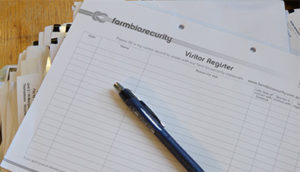Read the latest information on
Foot-and-mouth disease
 Being biosecurity conscious doesn’t need to be a big commitment; with a little planning and forethought many biosecurity activities slide right in to being standard practice. Of course, when all the planning is said and done, the next step is the ‘doing’.
Being biosecurity conscious doesn’t need to be a big commitment; with a little planning and forethought many biosecurity activities slide right in to being standard practice. Of course, when all the planning is said and done, the next step is the ‘doing’.
Many livestock producers have been ‘doing’ biosecurity for a long time, with some practices being so ingrained that they have become a natural part of the day-to-day operation of a farm. For simple biosecurity measures like checking stock or filling in movement documents, it can be easy to overlook why many practices have become standard.
Animal Health Australia (AHA) is encouraging all livestock owners to review their biosecurity plan with fresh eyes and look for ways to make small improvements.
“The movement of livestock, vehicles and equipment will always be the biggest risk of spreading diseases,” says AHA Extension Manager, Dr Emily Buddle.
“However, there’s a good reason your daily production practices and your biosecurity plan are also part of the six ‘essentials’ of on-farm biosecurity.”
Training, planning and recording includes, as you might expect, actions taken to prepare yourself and others to carry out biosecurity activities or record their results.
“A biosecurity plan isn’t just a document that lives in a drawer,” Dr Buddle explained, “it is your plan for keeping your property free of diseases, pests and weeds and a tangible way of demonstrating your risk management credentials.”
“Reviewing and updating your biosecurity plan every 12 months or so gives you an opportunity to take a look at the plan and find things which are working well and things that need to be introduced or could be improved.”
Production practices, on the other hand, covers routine activities, such as monitoring the health of livestock, administering vaccines and drenches, or maintaining yards and fences. Dr Buddle explains that, although many of these may be considered standard practice, there are always improvements to be made.
“Much like we’ve seen with COVID-19 and handwashing, you’d be surprised to see just how big an impact you can have if you do a ‘normal’ thing just a little bit more often, or a little bit more thoroughly.”
A core aspect of biosecurity is recording not only what happened on the farm – whether that is a visitor, a new purchase of livestock or supplies, any surveillance activities, or any deceased livestock – but also documenting your regular monitoring and what the outcome was, even if there wasn’t one. This lets you trace potential biosecurity problems both forwards and backwards, to identify the source of a disease, pest or weed, or alert a client to the problem.
“Of course, your plan is next to worthless if you, your family and your staff aren’t prepared to follow it,” says Dr Buddle.
“Bringing others up to speed, even if it’s with some informal training, on what your priority risks are and how you plan to address those, including what you expect of your staff, is as important as the plan itself.”
The Farm Biosecurity website can provide tools, templates and resources for biosecurity training, planning and recording.